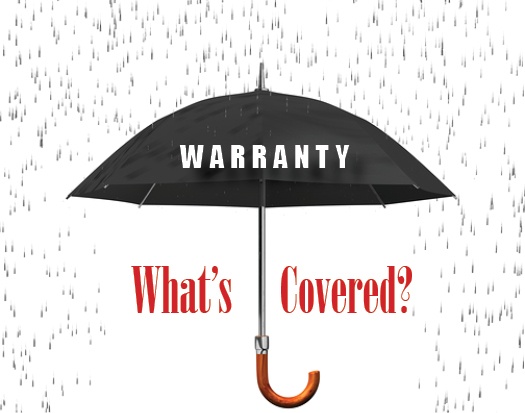Surprises can be great. Getting an unexpected upgrade to a better room on a business trip is nice. Finding out that your year-end bonus is bigger than you thought is good, too. Having your kids bring home report cards that exceed your expectations is always welcome.
Some surprises aren’t all that wonderful, however. Sometimes homeowners are stunned by what’s covered and what’s not covered in a home warranty. It’s hard enough when you know you have the responsibility for replacing something, but when you think something is covered that isn’t, you can be in for a rude awakening.
We believe it’s better to know ahead of time where you’re covered by your home warranty and where you’re not. Let’s take a quick look at what a warranty is designed to do and not to do.
When you’re engaging a quality builder with a good reputation, it may seem that paying a lot of attention to the warranty is a waste. Part of the building process, however, is that things can go wrong—even with a brand new home built by great builder. And sometimes the problems aren’t even the builder’s fault. As a homeowner, you want to be aware of what’s covered and what isn’t before you run into any potential problems. It’s less stressful for you if you understand the process for making a claim and for resolving any disputes that might arise with the warranty provider—even if it’s not the builder.
Generally speaking, new home warranties offer limited coverage on workmanship and materials, including on items such as windows, siding, doors and roofing. Warranties will generally also cover items such as HVAC systems, electrical work and general plumbing. You may find some variation regarding the length of time a warranty is in effect for a new home. The most common term is a 12-month warranty on the items mentioned above, but it’s best to check with your builder up front so that you’re aware from the outset of the length of your coverage.
It’s also a good idea to ask a few specific questions, such as:
- What, specifically, is covered?
- What is the length of the warranty?
- What is the extent of the builder’s liability?
- Are there written instructions regarding the process?
- How much time do I have to make a claim?
What often surprises homeowners most is what is not covered by a home warranty. On the whole, warranties don’t cover household appliances such as dishwashers, stoves, ranges or disposals. Most don’t cover cosmetic items such as broken tile or drywall cracks. Your home warranty won’t cover your yard’s sprinkler system either. And, typically, your home warranty won’t cover items that are already covered by a manufacturer’s warranty.
The good news is that you do have coverage on most of these things from the manufacturer, it’s just that they are not covered by your homeowner’s warranty. You don’t have to be alarmed, but it’s good to know up front who covers what if you should happen to run into problems.
As one of Hillsborough’s original landowner families, our roots go deep and our standards are set high. The uncompromising quality of our homes is reflected in every aspect of our work, from site selection, to land planning design and construction. We’ll stand behind the work we do for you! We invite you to check out our warranty to see how serious we are about this.













Leave a Comment